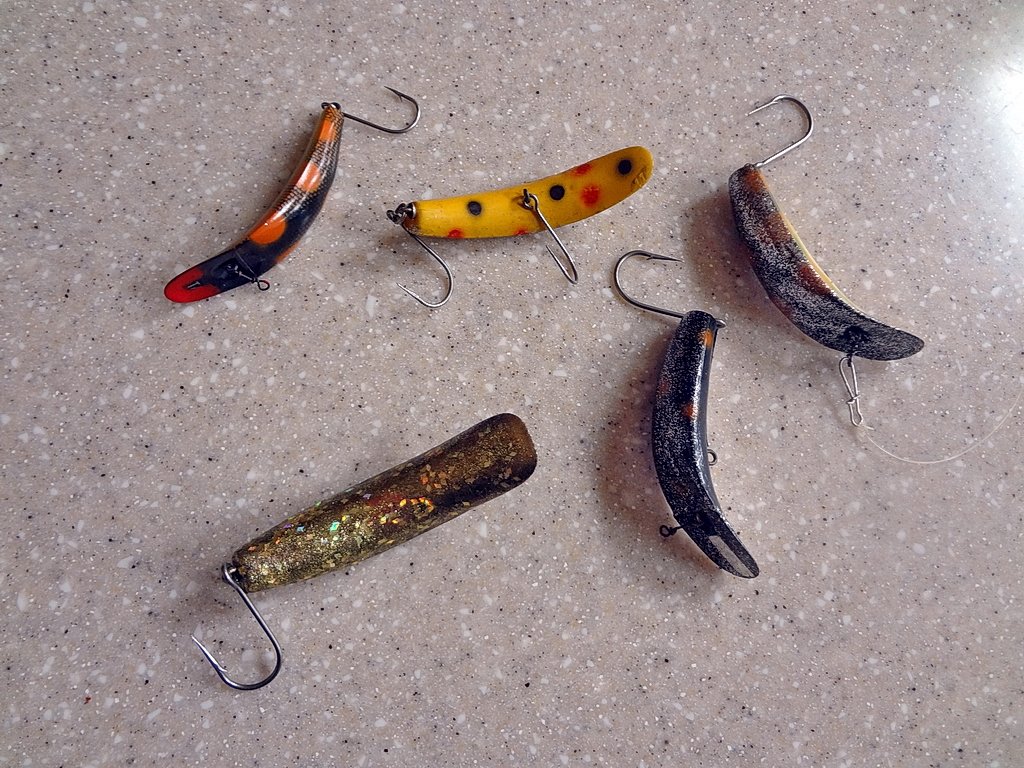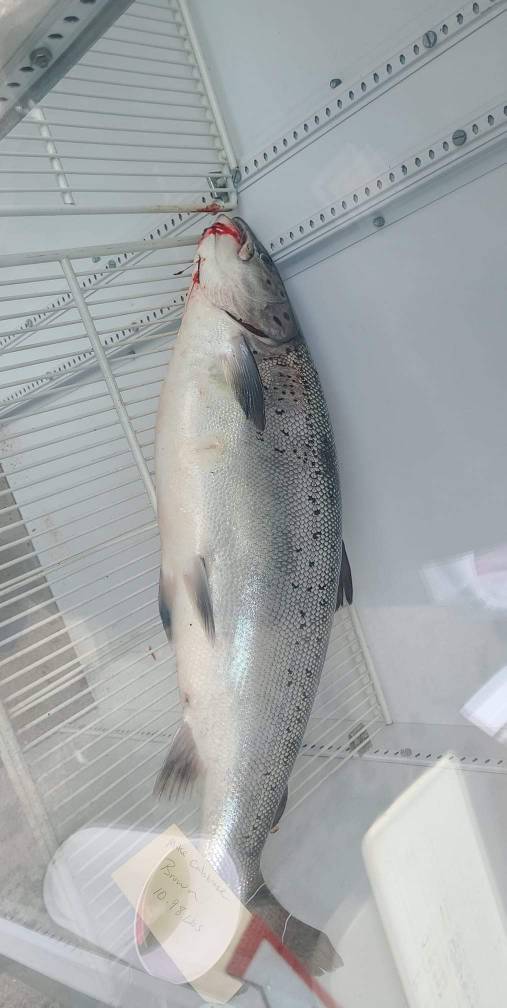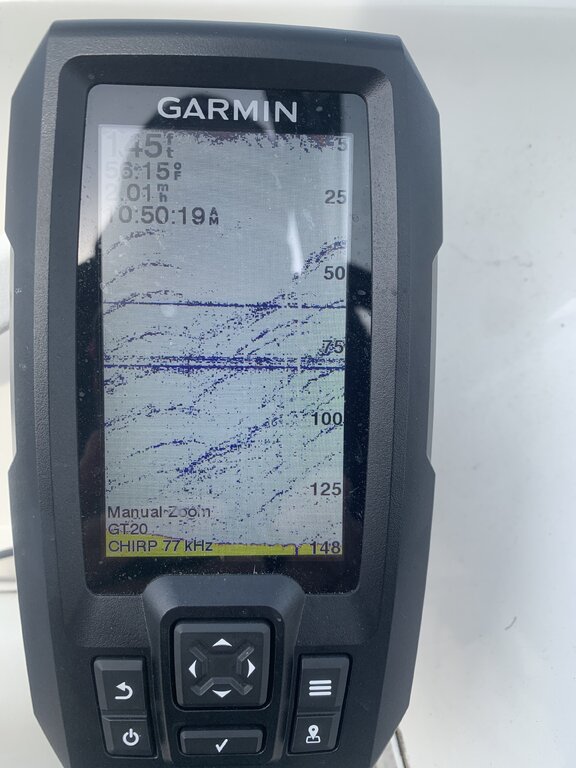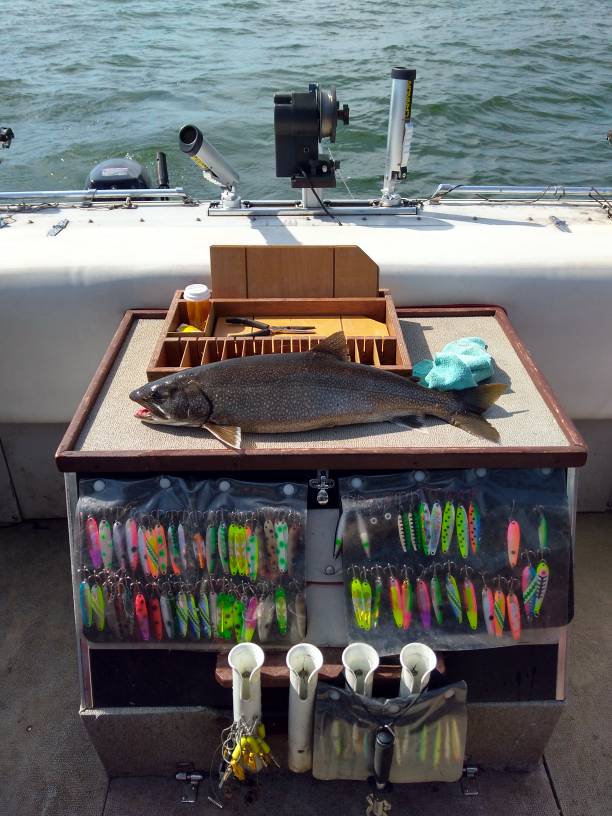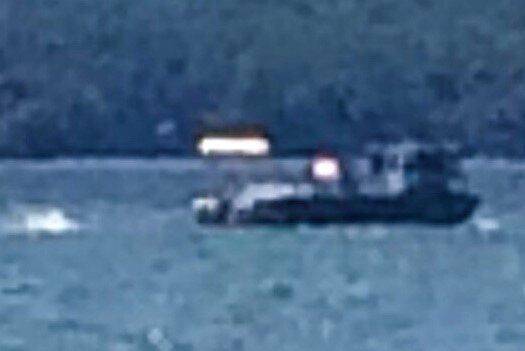-
Posts
261 -
Joined
-
Last visited
Content Type
Profiles
Forums
Events
Gallery
Store
Everything posted by Bigfoot
-
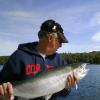
Catherine Creek lamprey barrier
Bigfoot replied to Second Chance 22's topic in Finger Lakes Discussion
Trapping adult lampreys can be quite effective if you get them all. It can be costly as it is labor intensive and the captured eels are landfilled. However, since a female lamprey can lay 30,000 to 100,000 eggs, if a few pair escape/bypass the traps, the entire effort is pretty much a waste of time/money. -

Catherine Creek lamprey barrier
Bigfoot replied to Second Chance 22's topic in Finger Lakes Discussion
The effort required to eradicate them entirely would be cost prohibitive. The goal has always been to control their impact. -

Catherine Creek lamprey barrier
Bigfoot replied to Second Chance 22's topic in Finger Lakes Discussion
Hop. this was 11years ago. There was no special fund. We saw an opportunity to helpthe fishery and spent about $450 for the stainless fasteners. I'm not a member these days as I am retired to Florida. As I recall, the next Spring there was high water and the lampreys just swam around the barrier. -

Catherine Creek lamprey barrier
Bigfoot replied to Second Chance 22's topic in Finger Lakes Discussion
-
I will if I can find it. The device was a series of stainless steel plates attached to the face of the drop structure that the lampreys could not attach to and work their way over. DEC bought the plates just before the state imposed a spending freeze. FLTA donated the stainless fasteners so that the project could be completed.
-
Around 2009 DEC, with help from the FLTA, installed an experimental device on the first Catherine Creek pool digger upstream from the lake that was supposed to block the lamprey spawning run. Unfortunately, it didn't work. I posted pics on this site at the time.
-
These are two entirely different treatments using different chemicals. One is used for flowing water and the other is used for deeper waters with less current. First treatment targeted the main creek, second the canal.
-
If you are bringing your leaders into the boat you are wasting time and asking for tangles! And there is no need to! As you bring up the rig just lay out the line on the top of the water until the leader with the fish is encountered. That's the only leader that comes into the boat! Hard to describe, simple to learn once you've seen it done.
-
-
I'm not saying that DEC didn't know what the fish were. Nor was the call left up to the fishermen. I was a director (one of the Trollers Assn reps) of this event for several years and we were well aware of the ID problem. In those days we had many judges from other non profits who were not even fishermen. It has always been a problem to get volunteers on a holiday weekend. I know that when working at the Watkins weigh station it was not uncommon for contestants to misidentify there fish. This at times led to some "interesting" discussions.
-
In years past DEC staff were present only to gather data. They (in my experience) took great pains to avoid any action that could be interpreted as a "judging" function. So, they were reluctant to settle fish ID disputes. I know of one instance where a fish was misidentified and the DEC person said only " you need to take a second look at that fish".
-
Wind can drastically modify the thermocline pushing and stacking up warm water near one shore and rolling up cold water elsewhere. I remember one easterly troll on Cayuga near the silos where I took 3 lakers with the rigger set at 75FT on the west side and took a pickeral and a smallmouth bass on the same setting as I approached the east side! Rainbows sometimes will leave temp to find bait and they will also go deep to avoid sunlight (just like mysis shrimp). For what it worth my boat's PB bow was taken at 115ft!
-
At one time I experimented with this a great deal. I never had much luck taping the whole spoon or taping one edge. It just killed the balance and ruined the action. I did have success taping a thin band (maybe an half inch wide) across the middle of the spoon. I had one that was lime green taped that was a real killer on Cayuga, raspberry tape worked for rainbows, and orange worked well for browns. Sorry, no pics available. These were all in the Sutton 44.
-
Seneca tribs are scheduled for treatment in 2021.
-
In my teen years I hunted a neighboring property quite a lot. The 50 acre chunk had once been mostly pasture but it had been converted into commercial Christmas tree production. So, the area was mostly pines/furs with hardwood hedgerows marking the edges of the former pastures. There were just 3 apple trees that I can recall and they were vastly different. Tree number one was a large mature tree mostly surrounded by pines. It produced yellow apples in enormous quantities and I don't think anything ate them. There would still be hundreds on the ground, even in mid- April. Tree number two was about 20 yards down the hill from tree one. It produced apples that were red and yellow. The critters cleaned up the apples daily and you could pretty much count on them being all gone before gun season. The third tree was in a small hardwood patch. It was being out competed for sunlight by the surrounding hardwoods. Instead of having the classic shape of an apple tree, it was a beanpole. It produced very few apples. Once while bowhunting (in a tree stand) I saw a button buck come and search the area. Not finding any, he worked his way into a dense thicket. About 5 minutes later an apple fell to the forest floor. Much to my surprise the little buck retuned on the dead run to claim that apple. It was all I could do to not laugh out loud.
-

Video - Fishing With Seth Green Rigs
Bigfoot replied to Pete Collin's topic in Finger Lakes Discussion
Key to success is to be able to put your lures back into the same depth where you just caught one. If you are bumping bottom as Pete describes, this is not to difficult. But what if you find fish suspended over 600ft of water? I know of two methods. First is to place the entire rig into the water so that the top leader is still on the surface. Then an arms length of line is released into the water which equals "one pull". The angler then fishes with say 15 pulls to see if he finds any interested fish. If he is successful he can then replicate the depth and stay on the fish. If not, he can try a different number of pulls, say 20, to drop his rig a little deeper. With practice, one can become deadly. Not me. I have a tendency to forget how many pulls each rod has and I find the method time consuming. Method two is to place bead chains at regular intervals so that all I have to do is count the beads as I release the line. If I have a strike and I have forgotten how many beads I have out, I count them as I am bringing up the rig. Using this method I have taken lakers as deep as 180 over 400FOW. -

Video - Fishing With Seth Green Rigs
Bigfoot replied to Pete Collin's topic in Finger Lakes Discussion
Never had any luck bringing the leaders into the boat and storing them while playing a fish. Usual result was tangles and the constant need to retire leaders. Instead of bringing the leaders into the boat, as they were brought up they were laid to the outside of the main line, remaining on top of the water. If fish was on anything but the bottom leader, the rig was pulled up until the leader with the fish was on top. Then the main line was wrapped around a rod holder leaving both hands free to fight the fish. I was often able to control the fish with one hand and net it with the other. All this is difficult to describe but fairly easy to do (with practice). I've caught thousands of fish using this method and I would never consider storing the leaders in the boat until the end of the day. -
The coal fired plant on Cayuga Lake formerly known as Milikan Station and later AES Cayuga burned the last of its coal Thursday afternoon and is now permanently closed. There are plans to convert it to a "data center" housing "cloud storage".
-
There have been some public meetings where individuals have complained that DEC hasn't required more seismic testing from Cargill. I don't know it the current activities are a result of those concerns or if DEC has stepped up there game. Mine permits have to be renewed periodically, every five years I think, and Cargill might be just getting their ducks in a row. There was a surface mine (gravel pit) located near the village where I used to live. They were lousy neighbors- running dusk to dawn including weekends. The village passed resolutions that DEC acted on and incorporated during the mine permit renewal process. As a result, the hours of operation were curtailed as a condition of the permit and the mine was required to build a new access road. This pretty much eliminated all of the truck traffic on village streets. I do not think the DEC could have been more caring or responsive! (The mine owners probably wouldn't agree). In Cargill's case, I don't see how having more seismic info is a bad thing, who knows, maybe they will discover a fault they didn't know about. It might even help them make better decisions. By the way, if you are driving on most any CNY road during the Winter, you are in all probability driving on salt from that mine.
-
-
OK, I'll bite. Walleye receive much better protection while spawning than rainbows. The April 1st opener for trout across the Finger Lakes provides hit or miss protection depending on if we have an early or late Spring. The uniform opener has the advantages of keeping the regulations simple and spreading out the fishing pressure. However, the trout runs on Canandaigua and Seneca are about several weeks earlier than those on Owasco and Skaneateles. During cold Springs many rainbows don't have the chance to complete spawning and are taken before returning to the lake. A rainbow taken as a 3lber doesn't live to return as a 5 or 6, and they don't return as 8's or 10"s! I have seen 'bows slaughtered by the hundreds on the opener during a late Spring. I am a proponent of delaying the season until April 15th or making portions of the tribs catch and release. Many rainbows are taken by lifting, thumping and I remember one case in Montour Falls where idiots used chlorox to basically wipe out an entire run in a small creek. Walleyes don't face similar pressures. I used to live within 500 feet of an Owasco tributary. Rainbow reproduction was excellent. I was fortunate to legally take a few over 10 pounds, but an unsettling amount of the harvest was illegal -neighbors with smelt nets during March. Once small rainbows leave the streams of their birth and enter the lakes they are essentially bait fish. I have been told by friends who were experienced sawbelly netters (for sale as bait, back in the day) that it was quite common to net juvenile rainbows along with the sawbellies. At that time they are highly susceptible to walleye predation. In lakes like Owasco where walleyes suspend over deep water they are usually found right near the bait. Skaneateles doesn't have much of a baitfish population, unlike the rest of the larger Fingers. Like it or not, the walleyes are going to put a serious dent in the rainbow population.
-
The town of Lansing (where Myers is located) has a moratorium on gas pipelines or infrastructure. If you build a house or an apartment complex there the option of heating with natural gas is non existent as NYSEG is not permitted to run the necessary lines. In addition, the permits to convert the power plant on Cayuga from coal to natural gas were denied by the state. So, it will be shutting down. Anyway, since the state owns the bottom of the lake, a pipeline is just never going to happen during Prince Andy's lifetime. My seat of the pants guess is that they are mapping the geologic formations under the lake. Probably has something to do with the salt mine which is near Myers and runs many miles North from there. The mine is planning to add a new entrance shaft several miles North of their current surface location. Insert other media.url
-
-
The Spring rainbow runs sell tons of fishing licenses. Many fishermen (myself included) started out as stream fishermen and didn't even own a boat for many years. To ignore this segment of the fishery is a failure to see the big picture. Yes, it's mostly a put and take situation, but most fish stocking is. The fact that there aren't that many trollers out this time of year doesn't mean much. Many are up on the big lake and others are on Cayuga where the fishing is excellent these days
-
Lots of opinions here. Serious lack of knowledge. The catch rate for rainbow trout on Skaneateles Lake is at its lowest point since the early 1970's. It's not a flawed method, it's a commonly used metric by fisheries professionals. Skan is currently stocked with about 20,000 rainbows per year. To say that stocking more rainbows is a "pretty easy fix" is a statement that very few if any pros would agree with. Fisheries management is far from being that simple.


